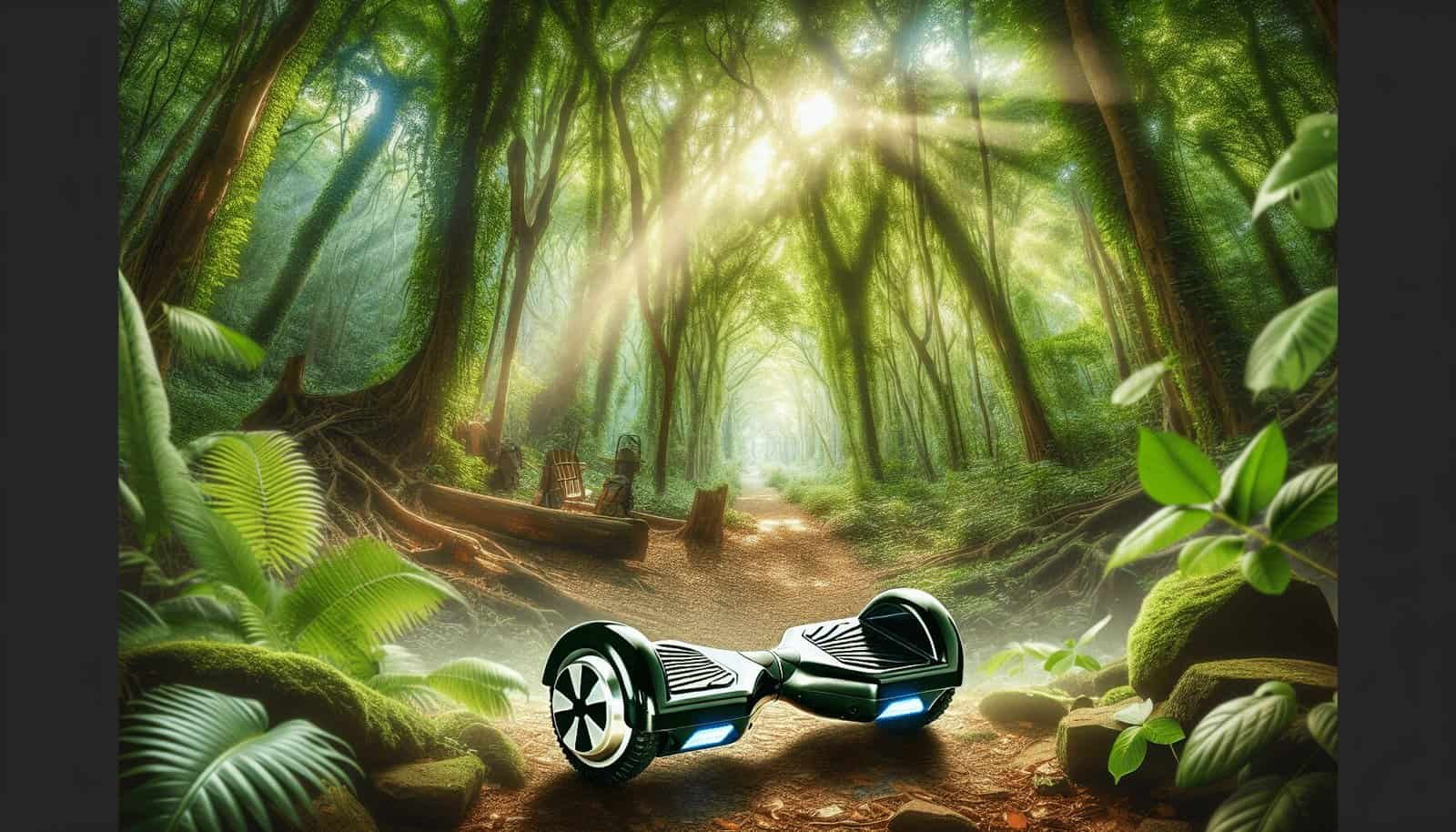Have you ever considered mixing the thrill of a hoverboard ride with the serene beauty of a camping trip or outdoor adventure? It seems like a modern twist on an age-old activity, doesn’t it? With hoverboards growing in popularity, they are no longer just a fun gadget for urban streets but are gradually finding their way into our adventure gear checklist.
Understanding Hoverboards
In the simplest terms, a hoverboard is a self-balancing scooter. It’s powered by rechargeable batteries and controlled by subtle shifts in your body weight. The gadget has two motorized wheels connected to a pair of articulated pads. Once you step on, it’s all about balancing and gliding smoothly to your destination.
How Hoverboards Work
To understand their use in outdoor settings, it’s helpful to know how hoverboards work. Each wheel has its own motor and tilt sensor. When you lean forward, the sensors catch this tilt and the motors drive the wheels forward. Lean back, and the reverse happens. This responsiveness gives hoverboards an intuitive feel, albeit with a learning curve when starting out.
Hoverboard Features
When considering a hoverboard for outdoor adventures, specific features become crucial. Look for larger, rugged wheels that can handle rougher terrain compared to standard models. Investigate battery life, as you’ll likely be far from electrical outlets during a camping trip. A high IPX rating is important for water resistance, and considering the weight of the hoverboard itself is vital for portability.
Can Hoverboards Handle Rough Terrains?
While your average hoverboard feels at home on smooth urban sidewalks, outdoor terrains pose different challenges. It’s critical to consider the types of surfaces you might encounter while camping or in nature.
Types of Surfaces
Hoverboards operate optimally on flat, even surfaces. However, manufacturers are now offering off-road models specifically designed for tackling some uneven terrains. These hoverboards typically come with bigger wheels, robust build quality, and more powerful motors to handle grassy patches, dirt tracks, or even lightly rocky paths.
| Surface Type | Recommended Hoverboards |
|---|---|
| Smooth Pavement | Standard Hoverboards |
| Grassy Patches | Off-road Hoverboards |
| Dirt Trails | Off-road Hoverboards |
| Light Rocky Paths | Select Off-road Hoverboards |
Weather Conditions
Weather can dramatically affect hoverboard performance. Rain can make surfaces slippery and affect balance. Thus, models with a good water resistance rating (IPX4 or higher) are recommended for such conditions. Extreme temperatures can also impact battery efficiency, so it’s prudent to check the manufacturer’s specifications regarding operational limits.

Practical Uses during Camping
Daily Transportation
One of the exciting possibilities with hoverboards during camping is using them for daily transportation across the campsite. This can be particularly useful in large campgrounds where attractions or facilities are spread out. It saves time and can be a fun way of getting from point A to point B.
Gear Transportation
Some hoverboards come equipped with racks or accessory mounts, allowing you to carry lightweight gear. Imagine using your hoverboard to transport your fishing gear or picnic supplies! It’s essential, however, to understand the weight capacity of your device to prevent overloading and potential breakdowns.
Emergency Situations
In certain emergency situations, where quick movement is needed across the campsite or park, a hoverboard could prove very useful, assuming the terrain is navigable for the device. However, it should never replace traditional first-response tools or vehicles.
Safety Concerns and Considerations
While hoverboards are fun and convenient, using them in outdoor or wilderness settings requires an extra commitment to safety.
Protective Gear
Always wear protective gear when using a hoverboard, particularly when venturing into uneven terrain. A helmet is a must, along with knee and elbow pads, to protect against falls. While these might seem cumbersome, they are vital for safety.
Wildlife and Nature
Hoverboards can sometimes frighten wildlife due to their noise and movement. It’s crucial to respect the natural habitat and avoid disturbing animals. Stick to designated trails where possible, to minimize your environmental impact.
Legal Restrictions
Before even packing your hoverboard, check local regulations about its use in nature reserves or campsites. Some locations might have restrictions on motorized vehicles, which could include hoverboards. Failing to comply can lead to fines or being asked to leave.

Preparing for a Hoverboard Outing
Preparation is key to ensuring that your hoverboard adventure is both enjoyable and safe.
Battery Management
Ensure you have a way to charge your hoverboard if you’re planning extended use. Portable solar chargers or power banks might be necessary if campsites don’t offer electricity. It’s also wise to start your trip with a fully charged hoverboard.
Maintenance
Before leaving for your campsite, check your hoverboard for any wear and tear. Look at tire tread, battery health, and physical integrity. Carry a basic repair kit with tools that can tighten screws or adjust components if needed.
Plan Your Route
Understanding the terrain of your camping or hiking location will help in choosing the best paths for hoverboarding. GPS and trail maps are handy tools not only for navigation but also to identify suitable trails that match your hoverboard’s capabilities.
Improving the Hoverboard Experience
Joining the Community
There are many online communities and clubs dedicated to hoverboarding. Joining these groups can provide tips on the best models for outdoor activities and routes that other hoverboard enthusiasts have found enjoyable. It’s a great way to meet like-minded adventurers and share experiences.
Upgrading Your Hoverboard
If you find that your hoverboard lacks some necessary features for outdoor use, consider aftermarket upgrades. These could range from more robust wheels to enhanced battery packs. Ensure that any modifications won’t void your warranty or affect the safety of the device.
Learning from Experience
Every hoverboard outing can teach you something new. Start with shorter trips to build your confidence, learn how your board handles different terrains, and gradually progress to more ambitious adventures. Keeping a journal or log of your trips can also be rewarding and insightful.

Conclusion
Incorporating a hoverboard into your camping trips and outdoor adventures can certainly add an extra layer of fun, convenience, and efficiency. They allow you to cover more ground and enjoy the serenity of nature with a pinch of modern technology. When equipped with the right model and by taking necessary precautions, you can seamlessly blend the excitement of technology with the tranquility of the great outdoors. After all, isn’t it wonderful to explore the possibilities that new gadgets bring to age-old practices like camping?

